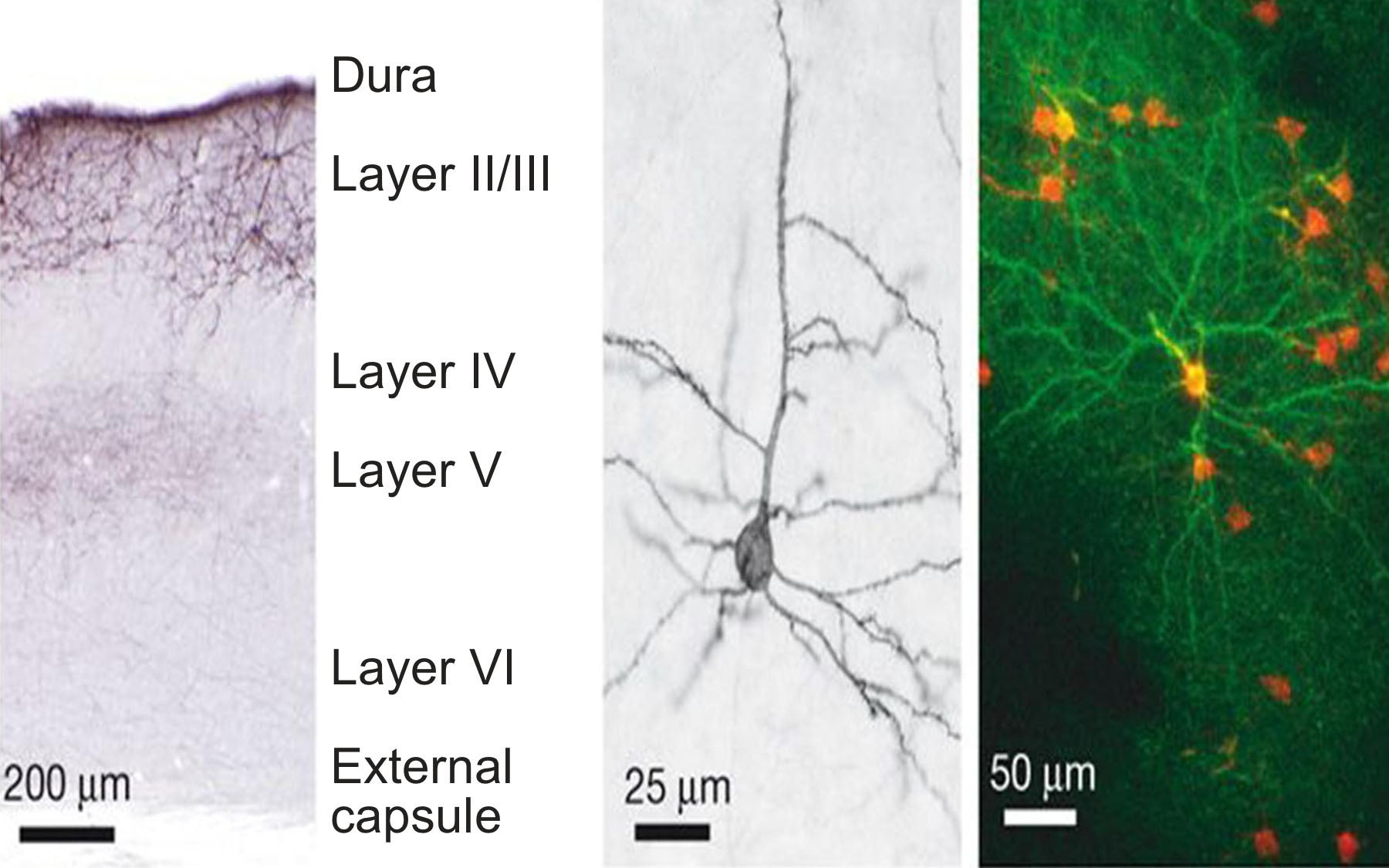Behaviors are produced in mice by stimulating as few as 60 neurons
Cold Spring Harbor, NY — Neuroscientists at Cold Spring Harbor Laboratory (CSHL) have revealed an unexpected sensitivity and specificity in circuits of the mammalian brain. In experiments with living mice, the researchers used light emitting diodes (LEDs) to stimulate tiny subsets of brain cells, or neurons. This stimulation prompted the mice to perform a learned behavior—in this case, taking a sip from a water bottle.
The neuroscience team, which included Karel Svoboda, Ph.D., and Daniel Huber, Ph.D., of Janelia Farm Research Campus of the Howard Hughes Medical Institute and of CSHL, and Zach Mainen, Ph.D., of CSHL, was able to prompt trained mice to perform learned tasks by optically stimulating as few as 60 neurons at a time. The adult human brain is an almost unimaginably complex tangle of quadrillions of connections forged among an estimated 100 billion neurons.
Both the result and the method used to obtain it are novel. In the past, neuroscientists have typically delivered stimuli to laboratory mice with pulses of electricity, delivered via tiny implanted electrodes. “The problem with this method,” Dr. Mainen says, “is that it is not as precise and specific as we would like. Electrical microstimulation excites nerve cells somewhat indiscriminately, making it impossible for us to specify which neurons are responsible for which observed effects.”
The team’s new method involved genetically engineering mice so that a small number of neurons in the sensory cortex of the mouse brain express channelrhodopsin-2, a special protein that allows neurons to be “turned on” by blue light. By shining light through a small window implanted above the cortex the investigators could directly activate the neurons in the living mouse, allowing them to test how many neurons must be activated before the mouse could sense what was happening.
“In a region of the cortex containing some 40,000 neurons, we were able to optically stimulate less than one percent of the population to produce learning and patterned behavior, a result which surprised us,” Dr. Svoboda said. “On the basis of these experiments, we believe the number of directly activated cortical neurons necessary to drive perception is considerably lower than previously thought, when estimates were made on the basis of electrical microstimulation.”
In addition to providing an insight into the exquisite specificity of circuits in the mammalian brain, the experiments may have applications in the clinic. Photostimulation may one day enable doctors to target very specific cell populations in the brain, reducing, for example, the side effects of techniques such as deep brain stimulation, which are being tested experimentally to relieve the suffering of people with treatment-resistant depression.
Written by: Communications Department | publicaffairs@cshl.edu | 516-367-8455
Citation
“Sparse optical microstimulation in barrel cortex drives learned behaviour in freely moving mice” appeared in Nature on December 19, 2007. The compete citation is as follows: Daniel Huber, Leopoldo Petreanu, Nima Ghitani, Sachin Ranade, Tomáš Hromádka, Zach Mainen and Karel Svoboda. The paper is available online at:
http://www.nature.com/nature/journal/v451/n7174/full/nature06445.html
